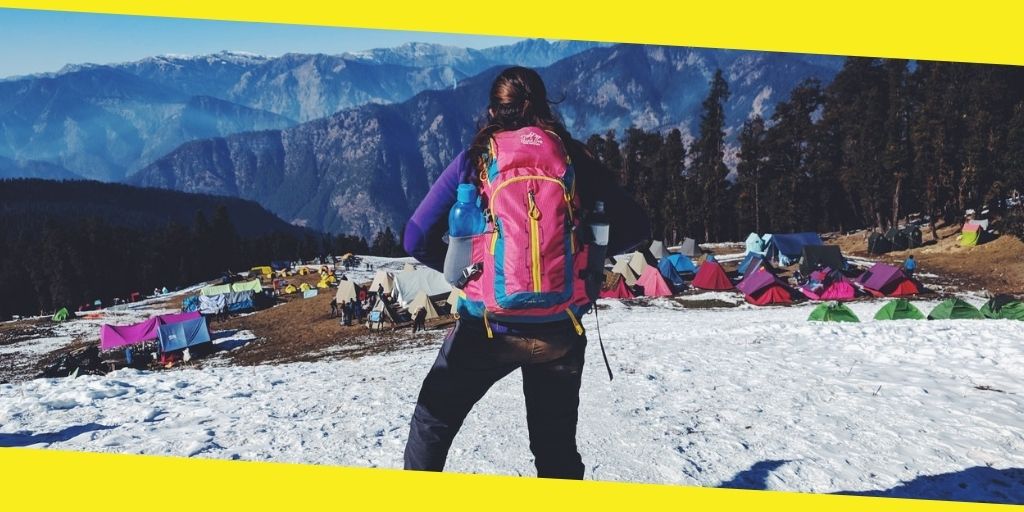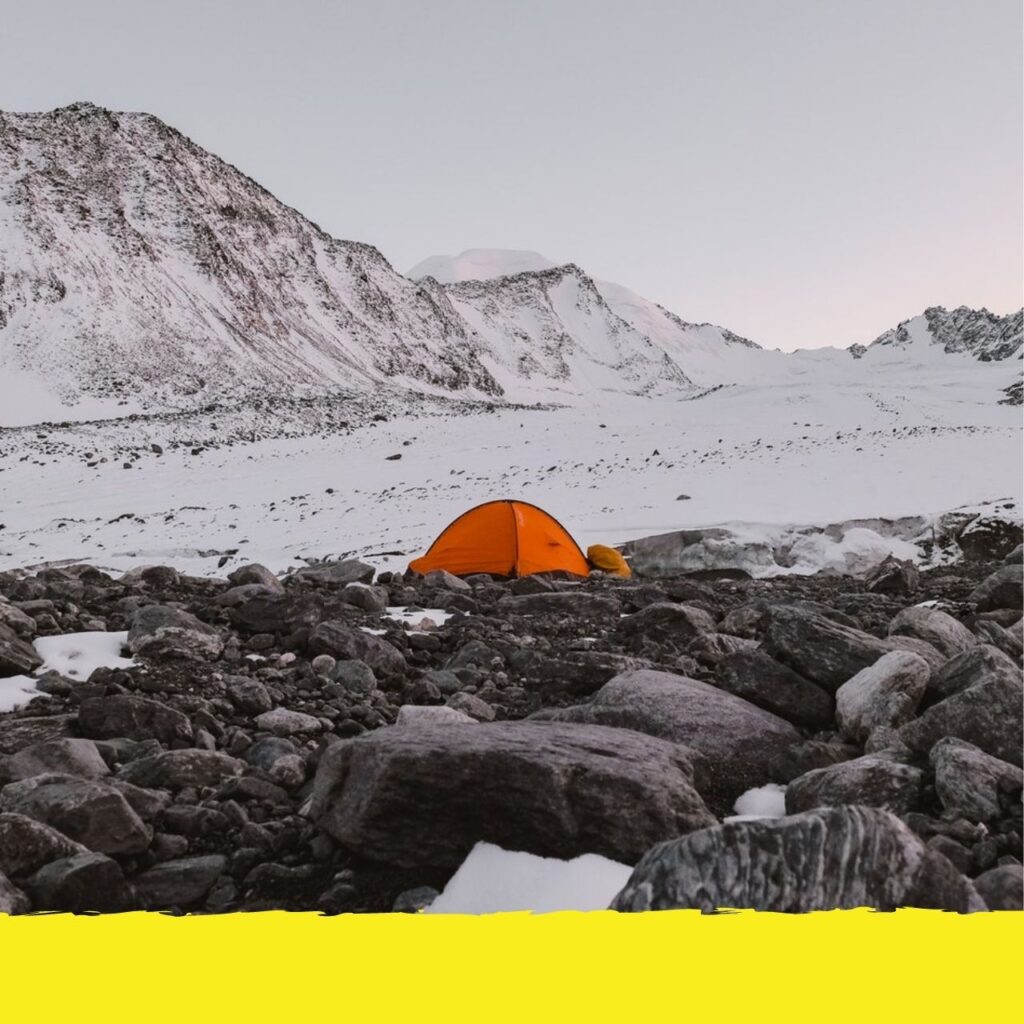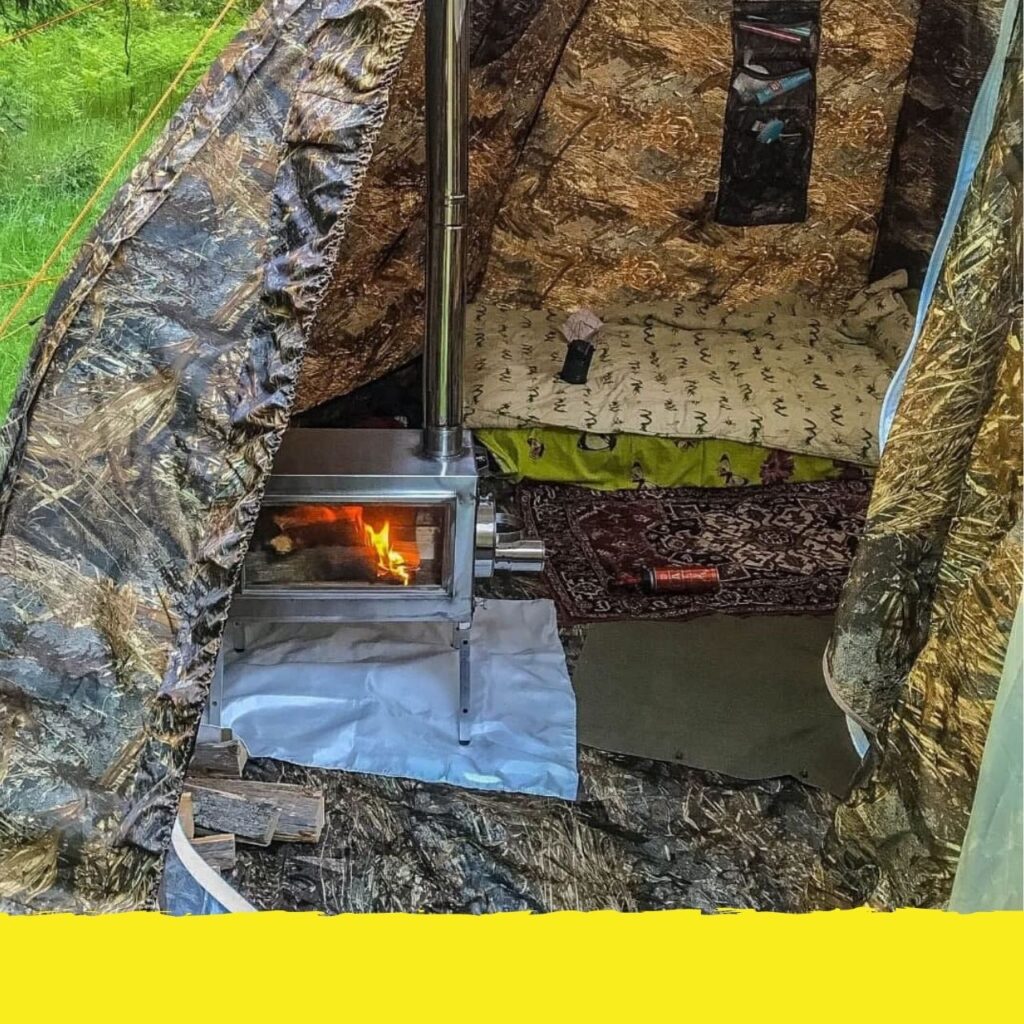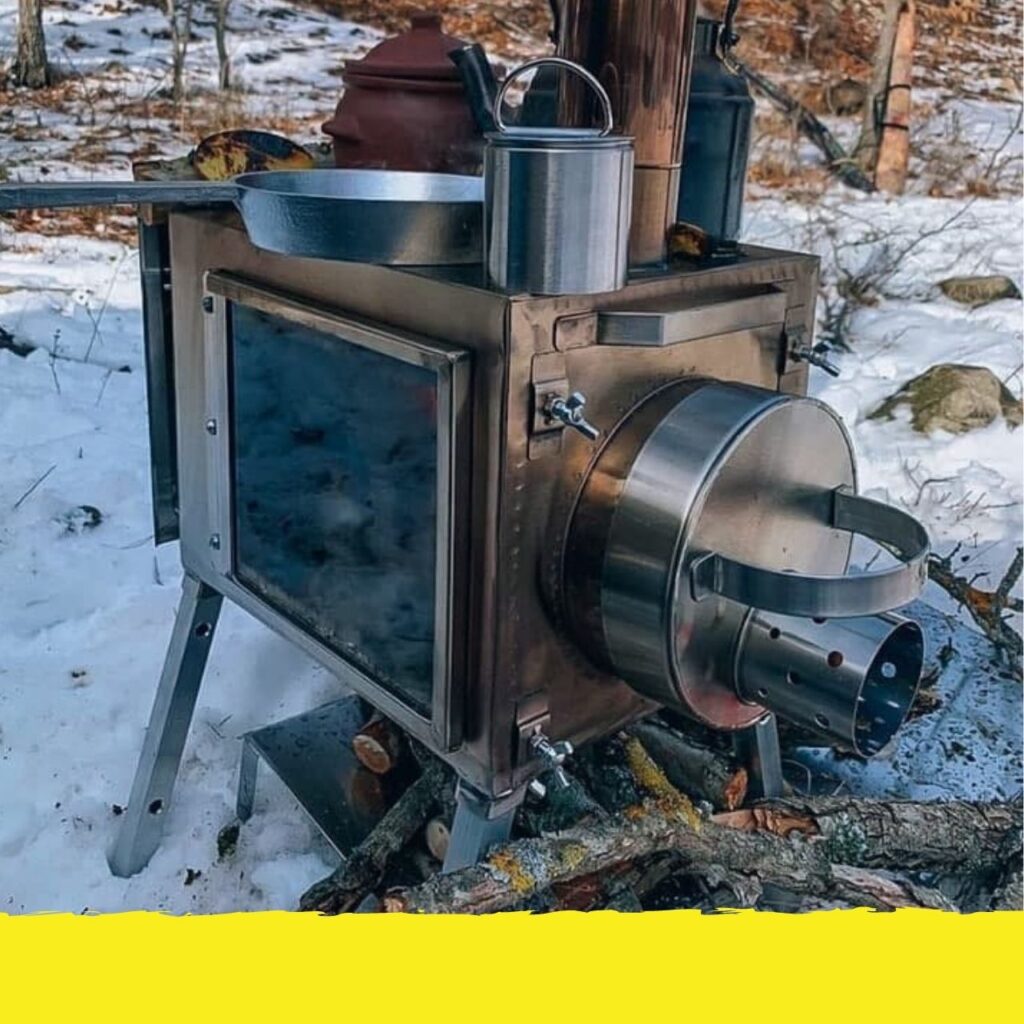Twenty Practical Tips on Winter Camping Safety
This post was last updated on July 8th, 2022

People typically associate camping with summertime. Fair enough: the weather is lovely, you don’t have to pack a lot of layers, and you don’t need to take care of firewood or fuel to keep you warm.
However, winter camping shouldn’t be underrated. Snowy landscapes and blissful silence make it an unforgettable adventure, a perfect chance to hit a pause on your monotonous daily routine and reload. Not to mention, there are less crowds: according to Forbes, winter camping is one of the best lower-risk getaway options during the pandemic, if you’re well-equipped and prepared.
Yes, winter camping is more challenging than a summertime adventure, but with some knowledge of how to stay safe, warm and comfortable, you’ll have your best time. Remember that the major dangers of winter camping are hypothermia, frostbite, and dehydration. In this post, we’re sharing our best twenty tips on how to avoid these issues.
Contents
Toggle#1 Keep an eye on the weather forecast

Camping in storms or blizzards can be extremely dangerous. That’s why you should frequently check the weather forecasts and reschedule your trip if the weather is going to be too much for you to handle. Also, make sure that your camping destination is not known for sudden avalanches.
#2 Get a tent with a stove

To stay warm (and safe) during your cold weather adventure, it’s the best solution to pick one of the tents with stove jack to maintain comfortable temperature inside. Not to mention, it will help you quickly and safely dry your gear, melt snow and cook meals.
#3 Pick the right tent
It goes without saying that you can’t use any tent for winter camping. Only sturdy double-layered winter tents for camping can survive high winds and heavy snowfalls.
#4 Don’t put up your tent anywhere
When setting up your tent, choose a place where you’ll get natural wind protection. Also, make sure the spot is away from an area where branches or full trees could fall. Finally, go for a place with distinctive landmarks that will help you to find out your tent in the dark or heavy snow.
#5 Use a proper sleeping bag
A sleeping bag is one of the key winter camping essentials. To stay warm and safe, get a sleeping bag which has a 10 degrees Fahrenheit lower rating than the expected night temperature at your camping destination. Also, don’t forget about a sleeping pad to put below your sleeping bag. It will help you keep warm by insulating your body from the ground.
#6 Choose the right clothes
The number one rule here is to dress in layers. Avoid cotton clothes, as cotton absorbs moisture which can cause you to get very cold quickly. For the base layer, merino wool or synthetic material are the best options. Prepare fleece pants and a warm sweater for the mid layer, and finally, take care of waterproof gear to wear as the outer layer. Don’t forget about some pairs of warm socks and gloves, and a hat that covers your ears. Finally, use reliable waterproof boots to keep your feet warm and dry.
#7 Remove your sweaty layers ASAP
Your body can lose a considerable amount of warmth when you’re having wet clothes on, so don’t forget to bring spare base layers, socks and gloves.
#8 Keep your nose out
Don’t cover your mouth and nose inside your sleeping bag as moisture from your breath can quickly make you cold.
#9 Stay close
Put your sleeping pad close to your partner’s: body-to-body warming is highly effective for staying warm in winter conditions and prevents body heat loss.
#10 Go pee when you need to
Urinate as soon as you feel the need — it will prevent you from losing heat. Your body has to remain at a steady temperature and, as a result, wastes energy keeping your bladder warm. Obviously, getting out of the tent on a frosty night doesn’t look like fun. Here’s a quick tip: you can use a pee bottle to simplify your nightly continence.
#11 Use a hot bottle
Make a small heater to help you keep warm in the night by boiling water and pouring it into a hard-plastic water bottle. Make sure it doesn’t leak and throw it in your sleeping bag.
#12 Protect your essentials from cold
Make sure you insulate anything that could freeze. Also, turn your water and fuel containers upside down: ice builds up from the top down, so if you keep the opening of your container at the bottom, you’ll still be able to use the liquid even if it has already started freezing. Also, remember that cold temperatures can destroy your gadgets. When not in use, keep things like your headlamp, phone, GPS and extra batteries in your sleeping bag or a pocket close to your body.
#13 Eat food for warmth

Get this: your body produces heat as it digests food. That’s why it’s a good idea to eat some food when you’re feeling cold. Have a little snack before you go to bed, and always keep a candy bar nearby.
#14 Stay hydrated
Even though you may not sweat as much in cold weather and feel less need for water, your body still needs it. Remember that the daily intake of water for women should be about 2.2 L, for men — 3 L. If you’re going to get water by melting snow, don’t forget to bring the melted water to a boil to be safe, so take care of extra fuel before you set off.
#15 Sleep with your boots
Cold boots in the morning are not fun. To avoid unnecessary stress, put your boots in a waterproof stuff sack at the bottom of your sleeping bag to keep them warm.
#16 Pack vaseline
To shield the exposed parts of your skin against frostbite and windburn, use vaseline. Apply it over your face, ears, neck, wrists, and hands every time you go out.
#17 Use reliable navigation tools
Pack a map, a watch, a reliable compass, and a good GPS system that will help you find your way around. Don’t underrate printed maps: you shouldn’t rely on online maps alone as you can lose Internet access at the most inappropriate moment. Remember to protect your printed map with plastic.
#18 Use a headlamp
To avoid getting stranded in the dark, don’t leave your campsite without a lightweight headlamp and a few extra batteries.
#19 Stay in touch
It’s crucial to tell your friend or family member where you are going and when you are planning to be back. It will help rescue teams to quickly find you in case you get stuck and don’t return. If you are setting off on a remote backcountry adventure, consider using a satellite messaging device that is very helpful in the event of an emergency.
#20 Don’t get lost
First of all, choose bright camping gear to be visible in the snow. Plus, avoid hiking by yourself: always try to stay together with other people. It’s also a good idea to pack a whistle and a mirror to help you send signals if you get lost.
Final thoughts
There is something so calming and peaceful about winter camping. If you prepare well and follow safety recommendations, we promise that winter camping will become your new favourite outdoor adventure. Among other essentials, a reliable tent with stove is the number one purchase for cold weather camping. Today’s market offers a really whopping choice of all-season tents, so you might get confused easily. So here’s the last quick tip from experienced winter campers: check out RBM offerings, the guys definitely have what you’re looking for.
Recommended For You
Italy: What Do You Know Before You Apply For Visa?
Most Inside
Most Inside offers high-quality recommendations and valuable updates to enhance all aspects of your life, providing premium guidance and enriching experiences.




